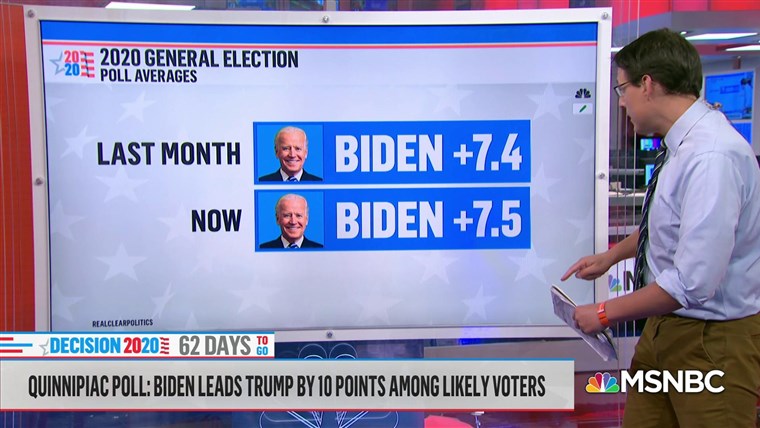Barack Obama entered Election Day 2008 with a +7.6 point lead over John McCain. The junior senator from Illinois would go on to beat the senior senator from Arizona in an electoral victory from 365 to 173.
In 2020, we could be on the cusp of an equally great, or even greater, Democratic victory.
As of Friday, Democratic candidate Joe Biden has a + 9.7-point lead over President Donald Trump, according to RealClearPolitics poll average. That’s higher than his 6.6-point lead before the Sept. 29 presidential debate in Cleveland and Trump’s hospitalization last week.
If Trump does not start closing the gap in the polls with Biden, then the president would need even greater upset in the polls to achieve a victory in 2020. Four years ago, Democratic candidate Hillary Clinton attended the nightly elections before Trump in Pennsylvania (+ 1.9 percentage points), Michigan (+3.4 points) and Wisconsin (+6.5 points). Trump won all three and took the White House. Clinton won the popular vote by +2.1 points after leading by +3.2 points in the RealClearPolitics poll average.
In this way, Trump will likely need to win at least six battlefield states where Biden currently leads: Arizona (+2.7 points), Florida (+3.7 points), Iowa (+1.4 points), North Carolina (+1.4 points) , Ohio. . . (+0.6 points) and Wisconsin (+5.5 points). If he wins them, Trump can likely afford to lose swing states like Michigan (+6.7 points) and Pennsylvania (+7.1 points), where Biden currently leads. If Trump wins any of the latter states, he can afford to lose Wisconsin.
While Biden leads the RealClearPolitics poll average in Iowa, FiveThirtyElection’s forecast still gives Trump a slight edge in the state. FiveThirtyElection gives Biden the lead in Trump’s other seven states in 2016, where the Democratic candidate is ahead in RealClearPolitics poll averages.
As of Friday, FiveThirtyEight predicted that Biden’s odds of winning were 85%, while The Economist predicted that the Democratic candidate will have a 92% chance of winning the electoral college.




